
Current Affairs is the most important area in all competitive exams. But the difficulty level is very high. That’s why; many aspirants get confused, how to select Current Affairs for Preparation of Competitive Examination? In this Post, Daily Current Affairs 31 July 2023, we have tried to cover each and every point and also included all important facts from National/ International news that are useful for upcoming competitive examinations such as UPSC, SSC, Railway, State Govt. etc.
So, here is the Top News of the Day for 31 July 2023 to help you prepare the Latest Current Affairs part. After reading this section, you can successfully attempt Current Affairs Quiz.
Current Affairs for Competitive Exam – 31 July 2023
World Ranger Day 2023: Date, Theme, Significance and History
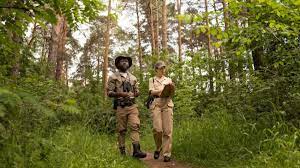
World Ranger Day, celebrated on July 31st, is significant because it brings us together to honour and thank the courageous individuals who dedicate their lives to protecting wildlife and maintaining our treasured natural resources. These unsung heroes selflessly work day and night, relentlessly striving to protect some of the most delicate ecosystems and endangered species on our planet. Their tireless efforts and unwavering commitment to the cause of conservation deserve our utmost respect and admiration.
Daily Current Affairs Quiz: July 2023
World Ranger Day 2023 Theme
The theme of World Ranger Day 2023 is “30 by 30,” building on the momentum from the 2022 United Nations Convention on Biological Diversity (COP15). During COP15, world leaders and decision-makers agreed upon a Global Biodiversity Framework, aiming to effectively conserve and manage at least 30 percent of the planet’s areas by 2030 (also known as the ’30 by 30′ target). This ambitious aim emphasises the critical need for expanded conservation efforts to safeguard ecosystems and protect the planet’s biodiversity.
Significance of World Ranger Day 2023
By commemorating this World Ranger Day, we not only honour the courage and sacrifice of park rangers and conservationists but also raise awareness about the challenges they face in their noble pursuits. World Ranger Day is a call to action for individuals, communities, and governments to work together to support conservation activities that will maintain a sustainable and vibrant earth for future generations.
History of World Ranger Day 2023
The origins of World Ranger Day can be traced back to the International Ranger Federation (IRF), an organisation established in 1992 to promote and support the work of park rangers worldwide. The day was first observed in 2007 in memory of eight rangers who tragically lost their lives while on duty in Virunga National Park, Democratic Republic of Congo. Since then, World Ranger Day has grown to become an internationally recognised occasion to celebrate rangers’ contributions and raise awareness about the challenges they face in their line of duty.
Markarian 421 firing high-energy particle jet towards Earth

Markarian 421, a supermassive black hole 400 million light-years away from Earth, is emitting a high-energy particle jet.
Daily Current Affairs Quiz: July 2023
What’s in News?
NASA’s IXPE (X-ray Polarimetry Explorer) has revealed some secrets about Markarian 421, a Supermassive Black Hole that is spewing a high-energy particle jet at Earth.
Markarian 421
Markarian 421 is a supermassive black hole which is firing high-energy particle jet aimed directly at Earth. It is located in the constellation Ursa Major. It is about 400 million light-years away from the Earth.
Supermassive Black Hole
A supermassive black hole is a highly enormous object that can grow by devouring gas, dust, stars, and planets at the cores of galaxies. They have such a powerful gravitational force that nothing can escape, not even light. They can have millions or billions of times the mass of our sun.
The origin of supermassive black holes is not entirely understood, but they are thought to have formed and grown through a combination of processes, including accretion of gas and the merging of smaller black holes over billions of years.
Supermassive Black holes are connected with tremendous phenomena like as active galactic nuclei (AGNs) and quasars, which release massive amounts of energy when material falls into the black hole and emits intense radiation.
Characteristics of Supermassive Black Hole:
They have a mass greater than about 50,000 times the mass of our Sun. These black holes are far too large to have formed from the gravitational collapse of a single star. These are always found at the centre of the galaxies. All galaxies have supermassive black hole at its centre.
Jet of high-energy particles
It is a stream of matter and radiation that is ejected from the vicinity of a black hole at very high speeds, close to the speed of light. The jet is formed by the interaction of the black hole’s strong magnetic field and the rotating disk of material that surrounds it. The disc is known as an accretion field because it provides matter to the black hole.
Reason of Markarian 421’s jet pointing towards Earth
Markarian 421‘s jet is pointing towards Earth because Earth is in its line of sight. This makes it a special type of supermassive black hole system called a blazar.
Blazar: Blazars are extremely intense and variable sources of gamma rays and X-rays because the jet’s radiation is amplified by a phenomena known as relativistic beaming.
PM Modi launches Urea Gold for farmers
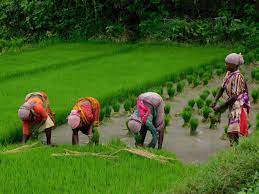
PM Modi during his visit in Rajasthan launched a new type of Urea called “Urea Gold” which is coated with sulphur that can help improve the soil quality and reduce the expenses of the farmers.
Daily Current Affairs Quiz: July 2023
What’s in News?
PM Modi stated during his visit to Sikar, Rajasthan that the government will not allow farmers to suffer due to rising urea costs; farmers in India will receive a sack of urea for Rs.226; urea is available for around Rs.800 in Pakistan, Rs.720 in Bangladesh, and Rs.2100 in China.
Urea Gold
Urea Gold is a new variety of Urea that is coated with sulphur, which is expected to address sulphur deficiencies in the soil. Urea Gold which is considered as “innovative fertilizer” is more economical and efficient than neem-coated urea. Urea Gold will ensure improved nitrogen use efficiency, reduced consumption and enhanced crop quality.
Benefits of Urea Gold
The use of Urea Gold in place of other fertilizers will address sulphur deficiencies in the soil. Urea Gold fertilizers is more economical and efficient than neem-coated urea. It increases the efficiency with which plants utilise nitrogen. It minimises fertiliser consumption while enhancing crop quality. It will save input costs for the farmers and also raise income for the farmers with enhanced production and productivity.
How Urea Gold is better than other fertilizers?
- Sulphur-coated urea allows for the progressive release of nitrogen, increasing its availability and uptake by crops.
- The inclusion of humid acid in Urea Gold further increases its lifespan as a fertilizer.
- This product not only substitutes traditional urea consumption but also reduces overall fertilizer usage.
- According to the analysis, 15kg of Urea Gold is equivalent to 20kg of regular urea in terms of advantages, making it a more efficient and effective alternative for farmers.
Other Pro-Farmer projects launched in Rajasthan
PM Modi also announced the 14th installment of the PM-KISAN Scheme and launched a number of projects in the election-year state. He also activated 1,500 FPOs on the Open Network for Digital Communication (ONDC). In addition, PM Modi designated 1.25 lakh PM Kisan Samriddhi Kendras (PMKSKs). PMKSKs are being developed to provide a one-stop solution for all farmers’ needs from information on agri-inputs to testing facilities for soil, seeds and fertilizers and to information regarding various government schemes.
UNESCO urges global ban on smartphones in schools to promote human-centred education approach

The United Nations Educational, Scientific, and Cultural Organisation (UNESCO) released its 2023 Global Education Monitoring Report, titled “Technology in Education: A Tool on Whose Terms,” which supports for a global ban on smartphones in schools where technology integration does not improve learning outcomes.
Daily Current Affairs Quiz: July 2023
An Overview of the News
UNESCO promotes a more “human-centered approach” to education and emphasises the importance of reducing dependency on digital technology. Excessive use of smartphones has negative effects on children’s academic performance and emotional competence.
UNESCO’s Manos Antoninis raised concerns about data leaks in educational technology, revealing that only 16 percent of countries have laws guaranteeing data privacy in the classroom.
The shift to online-only learning during the COVID-19 pandemic has resulted in the loss of approximately 500 million students worldwide. According to the report, the right to an education is becoming increasingly tied to meaningful connectivity. Because one in every four primary schools lacks access to electricity, it is critical to establish guidelines for connecting schools to the Internet.
The survey conducted by UNESCO reveals that only 11 out of 51 governments have implemented a curriculum for artificial intelligence (AI) in schools.
About UNESCO
The United Nations Educational, Scientific, and Cultural Organisation (UNESCO) is a United Nations (UN) specialised organisation. It is also a member of the United Nations Sustainable Development Group (UN SDG), a coalition of United Nations agencies and organisations that aims to meet the Sustainable Development Goals (SDGs).
Headquarters:- Paris, France.
Director General: -Audrey Azoulay.
Founded:- 16 November 1945 in London, United Kingdom.
The organisation has -193 members and 11 associate members.
Bengaluru becomes the first Indian city to join the World Cities Culture Forum (WCCF)
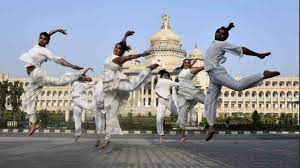
Karnataka capital Bengaluru has achieved a significant milestone by becoming the first Indian city to join the prestigious World Cities Culture Forum (WCCF).
Daily Current Affairs Quiz: July 2023
An Overview of the News
The World Cities Culture Forum (WCCF) is a global network of cities that collaboratively research and share intelligence to explore the important role of culture in shaping future prosperity.
Bengaluru is the 41st city to join the WCCF, which now has 40 members from six continents, including New York, London, Paris, Tokyo, and Dubai.
In the past year, the cultural essence of Bengaluru has been showcased through multimedia assets by WCCF as part of a collaborative project called ‘Unboxing Bangalore’.
The ‘Unboxing BLR Foundation’ established in April 2022 played a key role in this achievement. The Foundation is a non-profit initiative, founded by Prashant Prakash, founding partner of Accel India, and Malini Goyal, a philanthropist and journalist.
World Cities Culture Forum (WCCF):
WCCF was established in 2012. Justin Simmons, the Deputy Mayor of London for Culture and Creative Industries, was instrumental in its setting up.
In 2015, Queen Elizabeth recognized Justin Simmons’ significant contribution to culture in London. As a token of appreciation, Justin Simmons was awarded the Order of the British Empire (OBE).
About Bengaluru
Known as the ‘Silicon Valley of India’, Bengaluru has more than 30 government and private museums. Notably, in 2019, India’s first interactive music museum was inaugurated, and later in February 2020, the Museum of Art and Photography (MAP) opened, becoming the first major private art museum in South India.
At the core of Bengaluru’s vibrant intellectual and cultural exchange is the Bengaluru International Centre, established in 2019 within a 20,000 sq ft renovated industrial warehouse. Another hub of creativity is the Bangalore Creative Circus, which acts as an urban living laboratory.
Bengaluru serves as a major centre for film production, especially hosting the Kannada film industry which produces over 100 films annually. In addition, the city has a rich musical heritage, which includes North Indian (Hindustani) and South Indian (Karnataka) classical music.
Living up to its title as the “Garden City of India”, Bengaluru is adorned with many green spaces, notably the nationally acclaimed Botanic Garden, Lal Bagh and Cubbon Park. These green areas add to the natural charm and beauty of the city.
Government’s new bill proposes the president as a visitor of all IIMs.
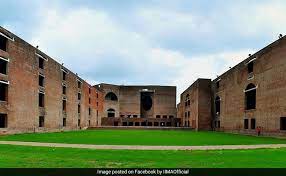
Union Education Minister Dharmendra Pradhan presented the Indian Institutes of Management (Amendment) Bill in the Lok Sabha.
The bill proposes to make the president as the Visitor of all IIMs. It seeks to amend the 2017 Act so that the Visitor can nominate the Chairperson of the Board of Governors of IIMs. The bill seeks to amend Section 10 of the present Act. A new Section, 10A, would be added to make President the Visitor of every Institute.
Daily Current Affairs Quiz: July 2023
Section 16 of the Act will be also amended to give more powers to the Visitor in the appointment of IIM Directors. The Board will now have to take the prior approval of the Visitor to appoint a Director. The Director will be appointed from a list of candidates recommended by a search-cum-selection committee.
Earlier, the director was appointed by the board with the prior approval of the Appointments Committee of the Cabinet headed by the Prime Minister. With prior approval of the Visitor, the board can remove the Director. The Visitor can also terminate the Director. The bill also proposes to convert the National Institute of Industrial Engineering, Mumbai to the Indian Institute of Management, Mumbai.
National Health Authority launches 100 Microsites Projects

The National Health Authority has launched 100 Microsites Project under Ayushman Bharat Digital Mission (ABDM).
Daily Current Affairs Quiz: July 2023
Aim: To establish a small ecosystem within a particular geographic area where there is complete ABDM adoption, and the entire patient journey is digitized.
The state and union territory may collaborate with development partners and interfacing agencies to set up and manage the microsites. All healthcare facilities and professionals, especially from the private sector, will be registered in ABDM modules like healthcare professionals registry (HPR) and health facility registry (HFR), followed by the installation of ABDM-enabled applications within the microsite.
Nepali and Norwegian climbers set record of climbing 14 peaks in 92 days

A Norwegian woman and her Nepali Sherpa guide climbed K2, the world’s second tallest mountain, in Pakistan becoming the world’s fastest climber to summit all 14 peaks above 8,000 meters (26,246 feet) in just 92 days.
Daily Current Affairs Quiz: July 2023
This was their 14th highest peak in just over three months. Other climbers included Pakistan’s Shahbaz Khan, the younger brother of renowned mountaineer Sirbaz Khan.
Harila and Tenjen set the fastest climbing record by beating Nirmal Purja of Nepal.
NS Vishwanathan appointed as non-executive chairman of Axis Bank
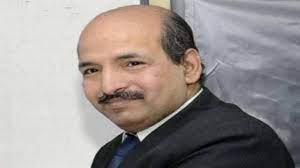
Reserve Bank of India has granted approval for the appointment of NS Vishwanathan as the non-executive chairman of Axis Bank for a three-year term.
Daily Current Affairs Quiz: July 2023
As per the bank’s official statement, NS Vishwanathan’s role as the chairman will become effective from October 27, 2023, or from the date of approval by the Reserve Bank of India, whichever comes first. This marks a significant step in Vishwanathan’s journey with Axis Bank, as he was earlier appointed as an independent director by the lender in May.
Vishwanathan brings with him a wealth of experience as a career central banker. Having joined the RBI in 1981 as a Direct Recruit Officer, he steadily climbed the ranks and ultimately retired as the Deputy Governor of the RBI in March 2020. He showcased expertise in various areas, such as, banking, and non-banking regulation, demonstrating extensive knowledge in central banking.
Launch of revamped website of National Pension System Trust

Deepak Mohanty, Chairman, Pension Fund Regulatory & Development Authority (PFRDA) launched the revamped website of the National Pension System Trust.
The new website features a sleek and intuitive design, optimized for both desktop and mobile devices.
Daily Current Affairs Quiz: July 2023
The key highlights of the website are:
- Streamlined navigation and menu structure
- Structured Information
- Enhanced online services with new features
- Enhanced user experience
- Improved search functionality
India’s Tiger Population Reaches 3,925 with 6.1% Annual Growth Rate, Holds 75% of Global Wild Tiger Population
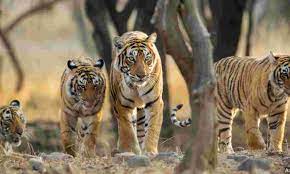
In 1973, the Government of India launched Project Tiger, a comprehensive conservation project aimed at protecting the nation’s tiger population and preserving biodiversity. Over the past fifty years, Project Tiger has seen extraordinary success, with India becoming home to about 75% of the world’s wild tiger population. On Global Tiger Day, 29th July 2023, Minister of State for Environment, Forest, and Climate Change, Ashwini Kumar, released a comprehensive report revealing India’s tiger population estimate of 3,925, with an annual growth rate of 6.1%.
Daily Current Affairs Quiz: July 2023
I. Project Tiger’s Success and Evolution:
- Project Tiger began in 1973, initially encompassing nine tiger reserves totaling 18,278 km2. It has now grown to 53 reserves spread across 75,796 km2, accounting for 2.3% of India’s entire land area.
- The first phase of tiger conservation focused on enacting the Wildlife Protection Act and establishing protected areas, while the second phase in 2005 adopted a landscape-level approach, community involvement, strict law enforcement, and scientific monitoring.
II. The Growth of India’s Tiger Population:
- During the 50th anniversary of Project Tiger in 2022, the Hon’ble Prime Minister declared a minimum tiger population estimate of 3,167 from the camera-trapped area.
- Further analysis of data by the Wildlife Institute of India, considering both camera-trapped and non-camera-trapped tiger presence areas, resulted in an estimated tiger population of 3,925 with an annual growth rate of 6.1% per annum.
- Notably, the tiger population in Central India and the Shivalik Hills and Gangetic Plains increased significantly, particularly in Madhya Pradesh, Uttarakhand, and Maharashtra. However, certain areas, like as the Western Ghats, have had localised reductions, necessitating specific conservation efforts.
III. States with Largest Tiger Populations
India’s Tiger Population Reaches 3,925 with 6.1% Annual Growth Rate, Holds 75% of Global Wild Tiger Population
| State | Tiger Population |
| Madhya Pradesh | 785 |
| Karnataka | 563 |
| Uttarakhand | 560 |
| Maharashtra | 444 |
IV. Tiger Reserve Abundance
| Tiger Reserve | Tiger Population |
| Corbett | 260 |
| Bandipur | 150 |
| Nagarhole | 141 |
| Bandhavgarh | 135 |
| Dudhwa | 135 |
| Mudumalai | 114 |
| Kanha | 105 |
| Kaziranga | 104 |
| Sundarbans | 100 |
| Tadoba | 97 |
| Sathyamangalam | 85 |
| Pench-MP | 77 |
V. Conservation Challenges and Measures:
- Approximately 35% of tiger reserves require immediate enhancements in protection, habitat restoration, ungulate augmentation, and tiger reintroduction.
- Challenges like poaching continue to pose a threat to tiger conservation.
- To preserve ecological integrity, eco-friendly development, minimizing mining impacts, and addressing human-wildlife conflict are crucial steps.
- Fortifying protected area management and intensifying anti-poaching measures are essential for the future of India’s tigers and their ecosystems.
ISRO sucessfully launches 7 Singaporean satellites on board PSLV-C56 rocket from Sriharikota

The PSLV-C56 rocket of the Indian Space Research Organisation (ISRO) successfully launched Singapore’s DS-SAR satellite and six co-passenger payloads from the first launch-pad of SDSC-SHAR in Sriharikota at 06:30 hours IST.
Daily Current Affairs Quiz: July 2023
PSLV-C56 / DS-SAR is a NewSpace India Limited (NSIL) Dedicated Commercial Mission for ST Engineering in Singapore. DS-SAR is a Radar Imaging Earth Observation satellite, is the primary satellite for the mission.
Singapore is also the owner of six co-passenger customer satellites. All satellites are launched into a 535 km circular orbit with a 5 degree orbital inclination. SAR carries a Synthetic Aperture Radar (SAR) payload Hoped by Israel Aerospace Industries (IAI). The co-passenger payload VELOX-AM is a microsatellite that has been developed by Nanyang Technological University (NTU), Singapore, for a technology demonstration of Additive Manufacturing (AM) payloads.
Largest and Smallest State of India, Population-wise & Area-wise
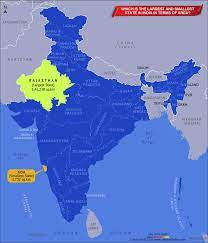
With a total land size of 3,287,263 square kilometres, India is the world’s seventh-largest country by area. It is also the world’s second-most populated country, with a population of nearly 1.4 billion people. This means that India is home to about 17.7% of the world’s population, even though it only occupies about 2.4% of the world’s land area.
India’s large population and diverse geography make it a fascinating and complex country. It is home to a wide range of cultures, religions, and languages. India is also a major economic power, and its economy is predicted to grow to become one of the world’s largest in the coming decades.
India is a prosperous country with a strong centre, comprising 28 states and 8 UTs with a total of 36 entities. All states have their different religion, culture and languages with different local environment that makes every state unique. That’s why, it is called Indestructible Union with Destructible States.
States and UTs
There are total 28 States and 8 UTs in India presently.
Largest state
- Area: Rajasthan (342,239 km²)
- Population: Uttar Pradesh (209,281,477)
Smallest state
- Area: Goa (3,702 km²)
- Population: Goa (1,458,545)
Largest and Smallest State in India in terms of Area
Rajasthan is the largest state of India in terms area which covers 342,239 sq. km area and the smallest one is Goa which covers 3702 sq. km area.
| S. No. | State | Area (sq. km) |
| 1. | Rajasthan | 342,239 |
| 2. | Madhya Pradesh | 308,245 |
| 3. | Maharashtra | 307,713 |
| 4. | Uttar Pradesh | 240,928 |
| 5. | Gujarat | 196,024 |
| 6. | Karnataka | 191,791 |
| 7. | Andhra Pradesh | 162,968 |
| 8. | Odisha | 155,707 |
| 9. | Chhattisgarh | 135,191 |
| 10. | Tamil Nadu | 130,058 |
| 11. | Telangana | 112,077 |
| 12. | Bihar | 94,163 |
| 13. | West Bengal | 88,752 |
| 14. | Arunachal Pradesh | 83,743 |
| 15. | Jharkhand | 79,714 |
| 16. | Assam | 78,438 |
| 17. | Himachal Pradesh | 55,673 |
| 18. | Uttarakhand | 53,483 |
| 19. | Punjab | 50,362 |
| 20. | Haryana | 44,212 |
| 21. | Kerala | 38,963 |
| 22. | Meghalaya | 22,429 |
| 23. | Manipur | 22,327 |
| 24. | Mizoram | 21,081 |
| 25. | Nagaland | 16,579 |
| 26. | Tripura | 10,486 |
| 27. | Sikkim | 7,096 |
| 28. | Goa | 3,702 |
Largest and Smallest Union Territory in terms of Area
Jammu and Kashmir is the largest Union Territory in terms of area which covers 125,535 sq. km land and the smallest one is Lakshadweep which covers 32.62 sq. km land.
| S. No. | Union Territory | Area (sq. km) |
| 1. | Jammu and Kashmir | 125,535 |
| 2. | Ladakh | 96,701 |
| 3. | Andaman and Nicobar Islands | 8,249 |
| 4. | Delhi | 1,484 |
| 5. | Dadra and Nagar Haveli & Daman and Diu | 603 |
| 6. | Puducherry | 479 |
| 7. | Chandigarh | 114 |
| 8. | Lakshadweep | 32.62 |
Largest State in terms of Population
According to the 2011 census, Uttar Pradesh is the most populous state, with a total population of 199,812,341. The state with least population is Sikkim with the total population of 610,577.
| S. No. | State | Population |
| 1. | Uttar Pradesh | 199,812,341 |
| 2. | Maharashtra | 112,372,333 |
| 3. | Bihar | 104,099,452 |
| 4. | West Bengal | 91,276,115 |
| 5. | Andhra Pradesh | 84,580,777 |
| 6. | Madhya Pradesh | 72,626,809 |
| 7. | Tamil Nadu | 72,147,030 |
| 8. | Rajasthan | 68,548,437 |
| 9. | Karnataka | 61,095,297 |
| 10. | Gujarat | 60,439,692 |
| 11. | Odisha | 41,974,218 |
| 12. | Telangana | 35,198,978 |
| 13. | Kerala | 33,406,061 |
| 14. | Jharkhand | 32,988,134 |
| 15. | Assam | 31,205,576 |
| 16. | Punjab | 27,743,338 |
| 17. | Haryana | 25,545,198 |
| 18. | Chhattisgarh | 25,351,462 |
| 19. | Uttarakhand | 10,086,292 |
| 20. | Himachal Pradesh | 6,864,602 |
| 21. | Tripura | 3,673,917 |
| 22. | Meghalaya | 2,966,889 |
| 23. | Manipur | 2,855,794 |
| 24. | Nagaland | 1,978,502 |
| 25. | Goa | 1,458,502 |
| 26. | Arunachal Pradesh | 1,458,545 |
| 27. | Mizoram | 1,097,206 |
| 28. | Sikkim | 610,577 |
Largest and Smallest Union Territory in terms of Population
The largest Union Territory in terms of population is Delhi with the total population of 16,787,941 and the smallest one is Lakshadweep with total population of 64,473.
| S. No. | Union Territory | Population |
| 1. | Delhi | 16,787,941 |
| 2. | Jammu and Kashmir | 12,267,013 |
| 3. | Puducherry | 1,247,953 |
| 4. | Chandigarh | 1,055,450 |
| 5. | Dadra and Nagar Haveli & Daman & Diu | 5,86,956 |
| 6. | Andaman and Nicobar Islands | 380,581 |
| 7. | Ladakh | 274,289 |
| 8. | Lakshadweep | 64,473 |


